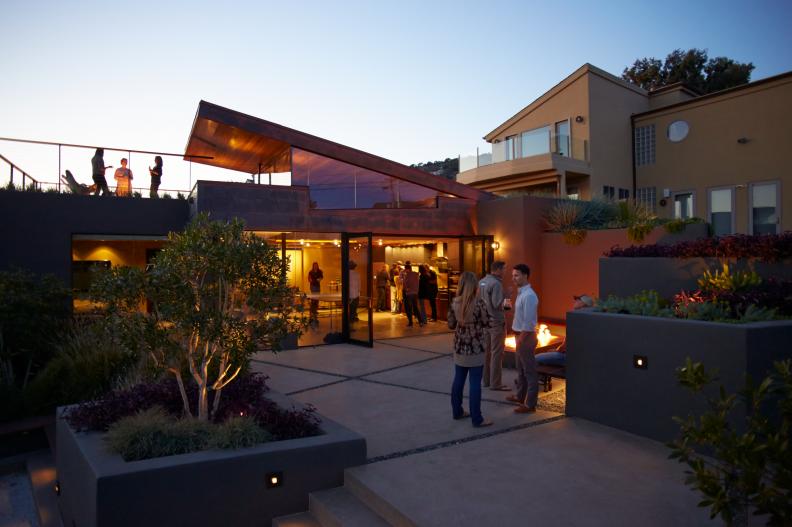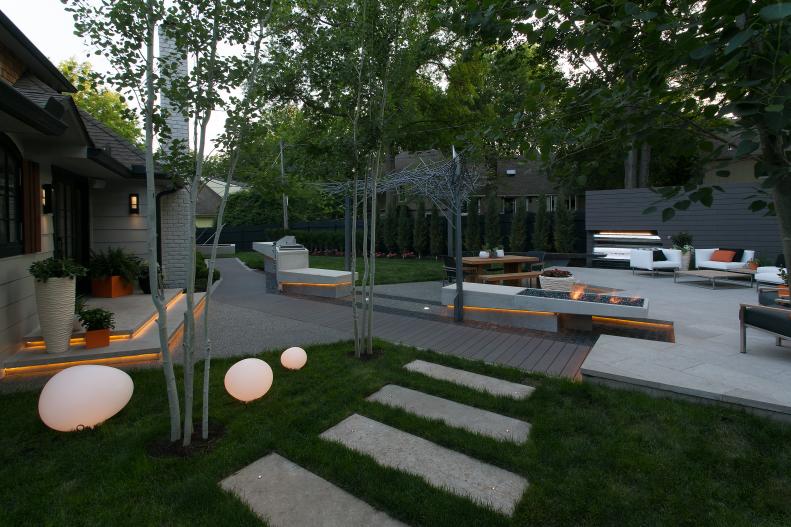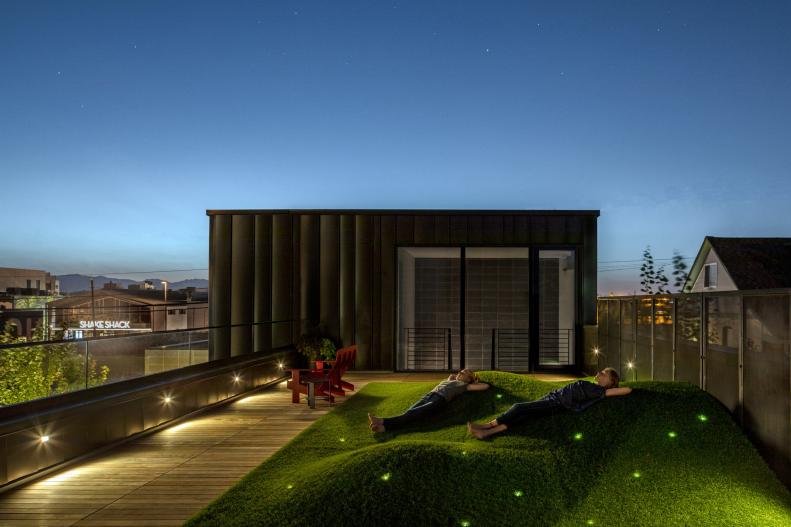A Well-Lit Landscape
A well-lit landscape should have both functional and decorative lighting. Safe navigation and security are the critical functions of outdoor lighting, but you also want lighting that accentuates your architecture and provides curb appeal. In the front and side yards, wall sconces, lanterns and pathway lights provide clear passage along walkways and leading up to doorways. Spotlights facing up or down can be used to boost your nighttime curb appeal or simply illuminate your driveway. In the backyard, lighting up your entertaining space can be done in several ways. You can spend a lot of money illuminating your decks, patios and pool or you can get a lot of the same effects with budget options and crafty DIYs.
When it comes to lighting trends, there are a lot of new tech options available for outdoor lighting beyond smart-enabled and motion-sensor security lights. Customizable color lights allow you to select a color scheme for different holidays, occasions or your favorite team. Bluetooth-enabled lights will flash to the beat of your music, and there are even floating light orbs that can be added to a swimming pool or water feature.
No matter how you illuminate the exterior of your home, make sure you’re not contributing to light pollution. Light pollution makes it impossible or nearly impossible to see the night sky in populated areas. Plus, too much artificial light can affect human health, wildlife and is a waste of energy. Many communities are implementing dark sky initiatives and codes to regulate light pollution. Dark-sky-friendly lighting is shielded (points downward) and contains minimal blue light. Blue lights brighten the sky more than any other color. The International Dark Sky Association (DSA) suggests using lighting that is warm or a lower color temperature — no more than 3,000 Kelvins (the higher the Kelvin, the bluer it is). When shopping for new lighting, look for the Dark Sky Approved seal. The DSA provides a list of manufacturers that sell dark-sky-approved products.

.-Battle-on-the-Beach-courtesy-of-HGTV.-.jpg.rend.hgtvcom.196.196.suffix/1714761529029.jpeg)







